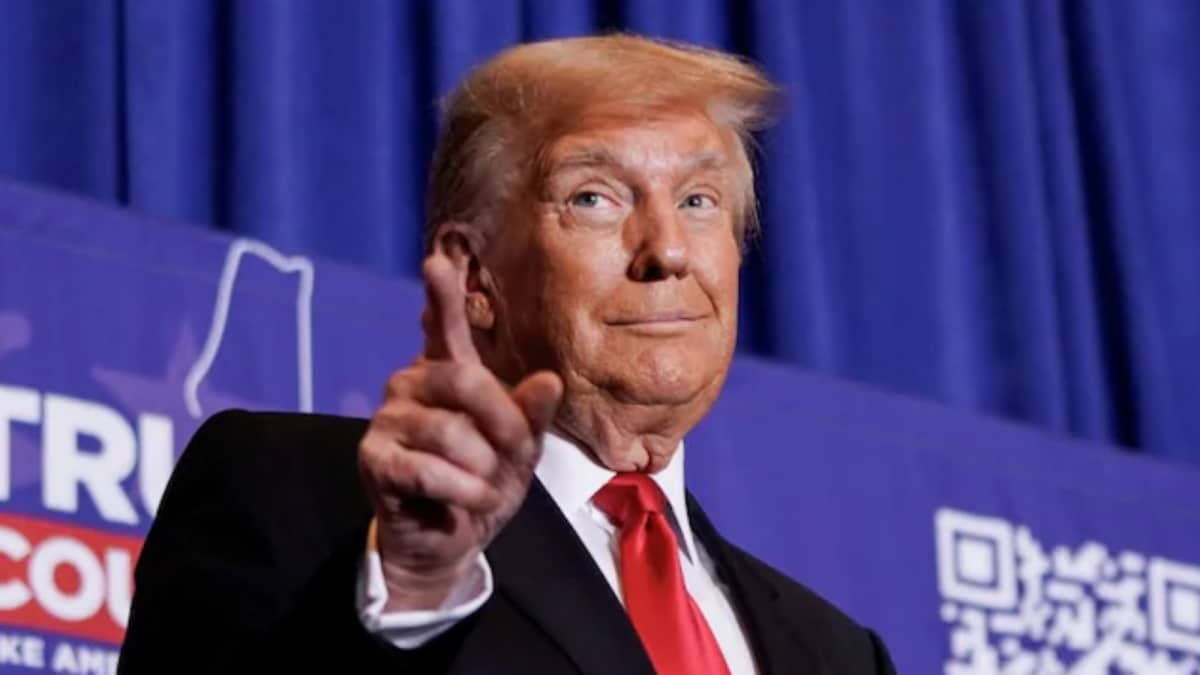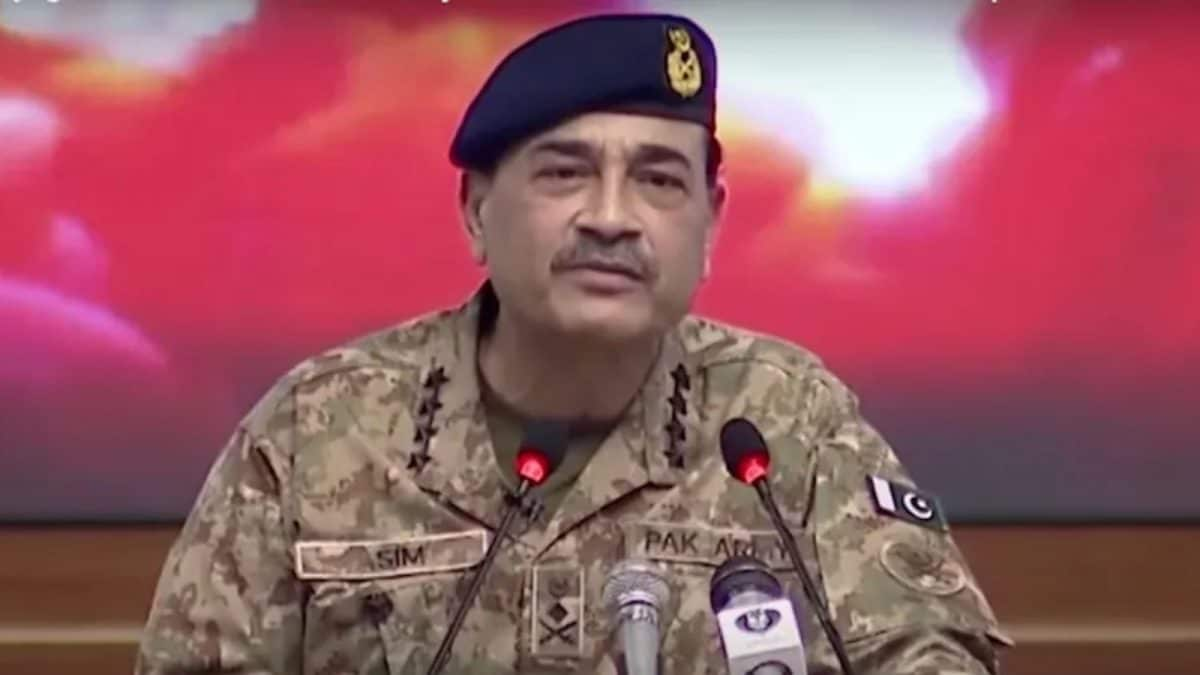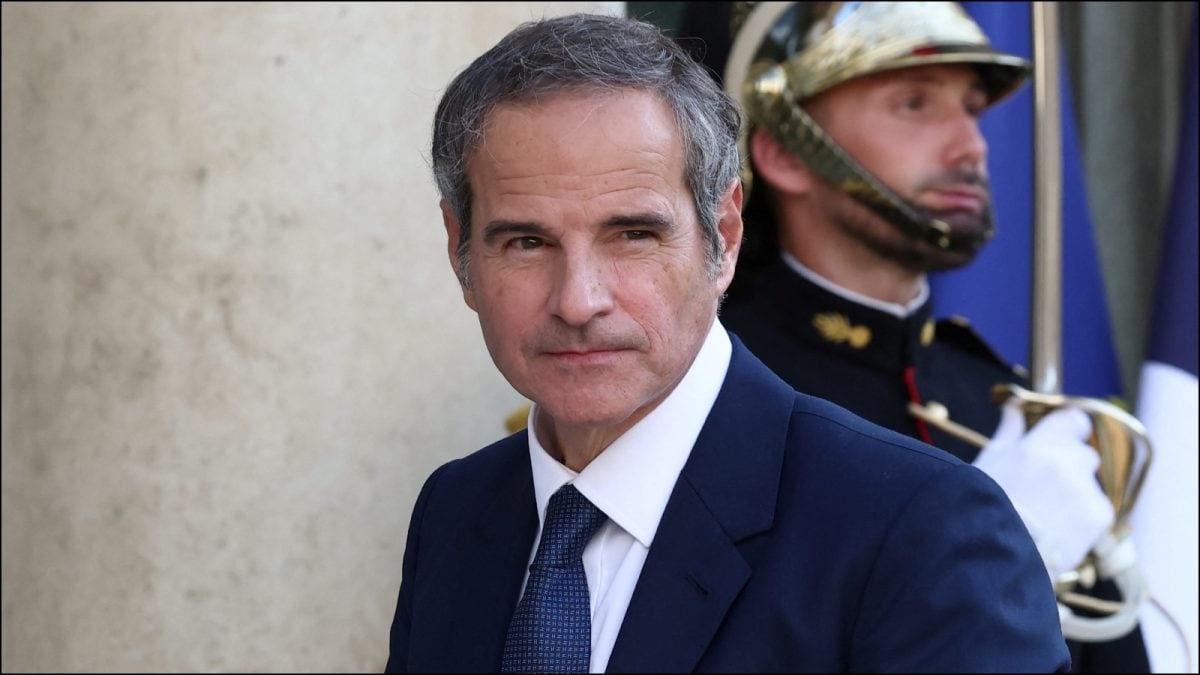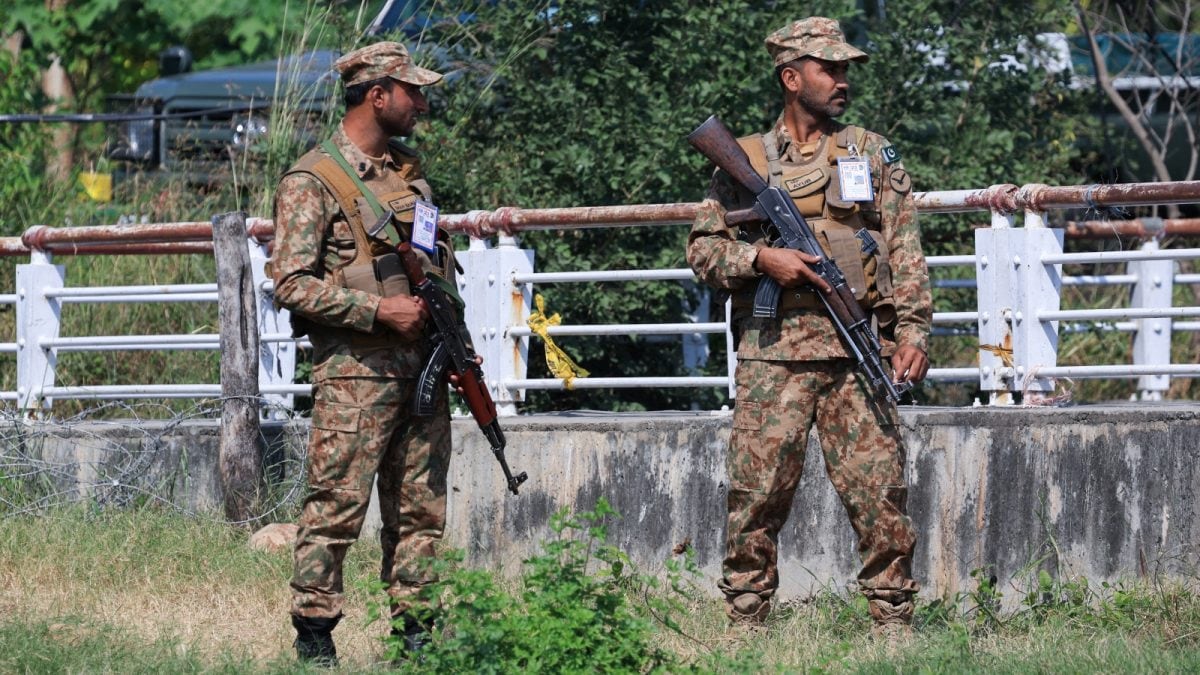Last Updated:April 30, 2025, 13:37 IST
In the aftermath of the Pahalgam attack, a look at how the textbooks describe India, Hindus, key historical figures, Congress, the independence struggle and Kashmir

Students at a school in Swat Valley in Pakistan. (AP)
“Hindus are kafirs who are to blame for evils on Pakistan; Indian Muslims are oppressed; India is to blame for all problems in Pakistan post Partition" – Thought these statements were from the jihadist propaganda to radicalise youths? No, these are from the lessons of hatred imparted in Pakistan’s school textbooks.
Days before the Pahalgam attack, which has led to escalation of tension between India and Pakistan, Pakistan’s Army chief Asim Munir had called Kashmir their jugular vein. Guess what? Their textbooks for young students, too, say the same.
The books also state that India is “an arrogant nation that has disturbed the balance of power in the region". In case of historical figures, they call Aurangzeb “heroic", while Mahatma Gandhi hardly finds a mention in the Independence movement.
News18, had for a series in 2023, accessed Class 8 and 9 textbooks published by the Book Foundation (Federal Textbook Board, Islamabad), which too found anti-India hatred being propagated among students.
Here’s a look at how the textbooks describe India, Hindus, key historical figures, Congress, the independence struggle and Kashmir:
‘KASHMIR IS LIKE PAKISTAN’S JUGULAR VEIN, IS KEY TO PAK OWING TO ITS MUSLIM IDENTITY’
News18 had found that the chapter on the history of the “Kashmir dispute" accuses “Hindus and Sikhs of organising genocide against the Muslim population".
The textbook reads: “Under the Third June Partition Plan, rulers of the princely states were given final authority to decide the future of their respective states….Gandhi, Pandit Nehru and Viceroy Lord Mountbatten also pressurized the Maharaja of Kashmir for accession to India. The Maharaja started to disarm the Muslims living in the areas adjacent to the Punjab border, Poonch and Jammu areas. The Maharaja deployed his troops in the area. The Hindus and the Sikhs started organised genocide of the Muslim population. Half a million Muslims were expelled from their homes in the Hindu and Sikh majority areas of Jammu. Two hundred thousand Muslims lost their lives probably due to cold weather or epidemics, nobody knows how many of them were slaughtered on their way to west Punjab. Those who reach the west Punjab were in miserable condition."
The chapter explicitly on ‘Indo-Pak Relations’ pitches the Kashmir issue as the major reason behind the two nations not being able to develop friendly relations. The blame for the issue, however, has been entirely put on India including that of the partition of East Pakistan in 1971 (currently Bangladesh). Sample this: “History of conflict between India and Pakistan due to Kashmir issue dates back to the days of partition in 1947. Due to this issue, the two countries could never develop good neighbourly relations with each other. As soon as, after partition, the Indian forces occupied Kashmir against the will of the people of Kashmir and the unrest in Kashmir turned into full scale revolt. India played a key role in the separation of East Pakistan as well. Indian propaganda about West Pakistan’s exploitation of East Pakistan infused hatred in the people of East Pakistan which resulted in a full scale rebellion in the province and ultimate dismemberment of Pakistan. In 1971 East Pakistan was separated from West Pakistan and a battle between Indian and Pakistani forces was fought on western front as well."
“The 1947 partition was based on the principle of Hindu and Muslim majority areas, but unfortunately the Hindu Raja of Kashmir did not allow Muslim majority states to be annexed with Pakistan. Obviously the Muslim majority population wanted the state to be a part of Pakistan."
It further stresses that Kashmir is important to Pakistan due to its “Muslim identity". “The Kashmir issue has always been a source of confrontation between India and Pakistan, but India is not ready to give Kashmir people their right of self-determination. Kashmir is like Pakistan’s jugular vein. Geographically, Kashmir has always been a part of the area which is now Pakistan. Above all, Kashmir is important for Pakistan due to its Muslim identity."
The school textbook even goes to the extent of including Kashmir in the list of states/nations in the world for whose liberation Pakistan has been raising its voice. Under the subhead, ‘Pakistan and World Affairs’, the textbook reads: “During this period Pakistan raised voice in the favour of all these nations. Pakistan’s diplomatic efforts for the right of self-determination of the people of Indonesia, Libya, Morocco, Algeria, Tunisia, Eritrea, Kashmir and Palestine, will always be remembered."
‘INDIA IS ARROGANT, DISTURBED THE BALANCE OF POWER IN THE REGION’
News18 had in 2023 reported that the history book titled ‘Pakistani Studies-II’ dives into the administration and formation of successive governments in the state including its relations with the world and immediate neighbours where it repeatedly blames India for disturbing peace in the region. The first chapter on steps taken by the Nawaz Sharif government to resolve the “Kashmir dispute" labels India “arrogant". “India was officially invited to resolve the Kashmir dispute, but these efforts did not succeed due to Indian arrogance. Hindu extremists demolished the historic Babri Masjid in 1992 and the Assembly of Pakistan condemned this brutal incident by passing a resolution," the text reads.
Further, the book not only blames India for “disturbing the balance of power in the region" but also accuses it of forcing Pakistan to launch a series of nuclear tests. “India conducted three nuclear tests in Pokhran on May 11, 1998, this disturbed balance of power in the region. The government of Pakistan was hard-pressed to reciprocate. Nawaz Sharif made a historic decision to withstand all global pressure and go nuclear. Six nuclear tests conducted at Chaghi (Balochistan) on May 28, 1998, made Pakistan the 7th nuclear power of the world and the first one in the Muslim World. This historic event shattered Indian dreams of hegemony in the region," it says.
The next chapter on Pakistan’s relations with its neighbours has a line that reads: “Afghanistan on the west and India on the east, are the two neighbours which have always created problems for us."
‘HINDUS ARE THUGS WHO MASSACRED MUSLIMS’
According to a 2017 AFP report, a government-approved Class 5 history textbook used in schools in Pakistan’s Balochistan province, textbooks in Pakistan teach students that Hindus were “thugs" who “massacred Muslims, confiscated their property, and forced them to leave India". The books also refer to Hindus as “traitorous" and being responsible for the bloodshed that erupted during Independence 70 years ago when British India was divided into two nations.
‘HINDUS KAFIRS, TO BLAME FOR EVILS ON PAKISTAN’
A documentary by BBC Urdu in 2021 showed how Hindudvesh/Hindumisia is officially sanctioned by the Pakistani government through its school textbooks. The viral video showed Pakistani Hindus narrating how they were humiliated by their friends simply because they were Hindus. State-sanctioned textbooks called Kafirs (derogatory slang for non-believers), saying that all evils that have fallen upon Pakistan are due to Pakistani Hindus, it said.
In the video, Pakistani Hindus from different fields quoted school textbooks that normalised hatred for Hindus and Hindu Dharma, and relegated them to being second-class citizens.
‘AURANGZEB A HEROIC FIGURE’
In India, students studying under the CBSE, ICSE, IB, and various state boards are introduced to Aurangzeb as a complex and often controversial figure. Textbooks, particularly those under NCERT, emphasise his religious policies, including the imposition of the Jizya tax on non-Muslims in 1679 and his role in the demolition of temples such as the Kashi Vishwanath in Varanasi and the Keshavdev temple in Mathura. These actions are often mentioned setting him apart from rulers like Akbar, who is celebrated for his inclusive and secular policies.
However, in Pakistan, where students follow the Federal Board of Intermediate and Secondary Education (FBISE) and provincial boards such as the Sindh and Punjab boards, Aurangzeb is revered as a heroic figure. Textbooks present him as an ideal ruler who upheld Islamic principles in governance. His implementation of Sharia law and policies such as the Jizya tax are seen as demonstrations of his commitment to Islamic rule.
‘CONGRESS: A HINDU PARTY’
News18 had found that the chapter on the formation of the Indian Congress (INC) during the British era in the class 8 history book reads, “Many Indians joined hands to demand for India’s nationalism, purely Hindu in religion. Indian Congress (INC), therefore, became more a Hindu political party than a voice of the whole India." The book introduces Mahatma Gandhi, who led India’s fight for freedom from British rule, as just a “Hindu leader". The textbook goes on to accuse him of “disregard of Muslims".
“Gandhi and his young supporters took charge of the Congress and approach of Hindu as a majority and disregard to Muslim rights created hatred, jealousy and narrow-mindedness," the school book reads.
There are multiple instances where the book talks about Muslims not being able to trust Hindus in their fight for their rights (Muslim rights). “The partition of Bengal brought the realisation to Muslims that they could not expect any fair-play from the Hindu majority. Therefore, to safeguard their interests, the Muslim leaders drew up a plan for separate electorates for their community".
At another point, it again makes the same statement about Muslims not being able to trust Hindus. “However, the Muslims had learned an important lesson that they could neither trust Hindus nor British…The Khilafat movement in this respect brought in the concept of nationhood for the Muslims of India," it says.
The partition of Bengal was annulled in 1911 (which was earlier divided into two provinces with East Bengal and Assam having an overwhelming majority of Muslims). “The annulment came as a setback to Muslims; however, it gave them a lesson. The Muslims came to realise that they could trust neither the Hindus, nor the British for the protection of their rights…The Congress claimed to be a national party, but on the question of partition, it behaved like a sectarian Hindu organisation," it says.
‘INDIAN MUSLIMS WERE OPPRESSED’
At every other point, it stresses on how Muslims were oppressed at the hands of the “Hindu majority". The Class 9 chapter on “Elections of provincial assemblies under Govt of India Act 1935" goes on to say, “The Congress ruled badly. The period was marked with political corruption and high-handedness of the party over the government. These governments introduced schemes like Vidya Mandir and Gandhiji’s Wardha. These schemes were not acceptable to the Muslims. The Congress government took steps to replace Urdu with Hindi and tried to introduce ‘Bande Matram’ as the official anthem. This song had anti-Muslim background and provoked hatred against the Muslims."
‘INDIA TO BLAME FOR POST PARTITION PROBLEMS OF PAKISTAN’
Even post-partition problems in Pakistan such as those of administration, having poor resources, feeding refugees (Hindus from Indian provinces), and the mass violence during migration have been blamed entirely upon the Indian government, showing it in a bad light.
Upon partition, one of the chapters explaining the scenario in Pakistan, says, “Territory of the state of Pakistan was divided into two parts — West Pakistan and East Pakistan; these were separated by thousands of miles of hostile Indian land."
It goes on to talk about the problems faced by the newly formed state, Pakistan, and it blames India largely for this. “Due to untimely and badly planned partition and the large-scale massacre of Muslims by Sikhs, the Muslims of East Punjab were forced to leave their homes and migrate to Pakistan in large numbers," it says.
Elaborating on one such matter under the heading “The Canal Water Issue", it again accuses India of cutting its water supplies. “In April 1948, India demonstrated her negative potential by cutting water supplies of vast areas in the vicinity of Lahore; crops grown on thousands of acres were damaged," it says.
GANDHI HARDLY MENTIONED
The chapters on Gandhi are a striking example of the gap between how Partition is portrayed on either side of the border. In Pakistan, his contribution to the struggle for independence is hardly mentioned, whereas in India he is hailed as an “one-man army".
CONCERNS
The Global Education Monitoring Report 2017-18 of the United Nations Educational, Scientific and Cultural Organization (UNESCO), too, had expressed concern over school textbooks in many countries, including Pakistan, glorifying war and military heroes rather than teaching peace, non-violence and reconciliation.
Location : First Published:April 30, 2025, 13:35 IST
News explainers ‘Hindus Are Thugs Who Massacred Muslims, India Arrogant’: How Pak Textbooks Impart Lessons Of Hatred

 1 month ago
1 month ago
















